General
Before you fly...
ForWelcome to Frankfurt/Main! This is one of the busiest airports in the world and FSXthe busiest airport on VATSIM,. Due to the amount of traffic and the airport's complexity, it is very important that you P3Dprepare yourself thoroughly to keep it fun for everyone and MSFSavoid it'smistakes highlywhich recommendedmight lead to havedelays for yourself and other users.
As Frankfurt/Main sees very regular staffing, it attracts a (payware)lot of pilots. scenery installed to have the correct airportlayout available.
Always have charts on board! Frankfurt is a complex airport and you will not be able to find your way without charts! The easiest way to find some charts is to use Chartfox (Vatsim Login required).
Hold Short Instructions:
Frankfurt Apron is complex and many hold short instructions are possible. If you are givennew ato holdVATSIM, shorthowever, ofyou instruction:might Holdwant into front ofavoid the dashedairport yellow line, do not turn into the taxiway! See the example image.
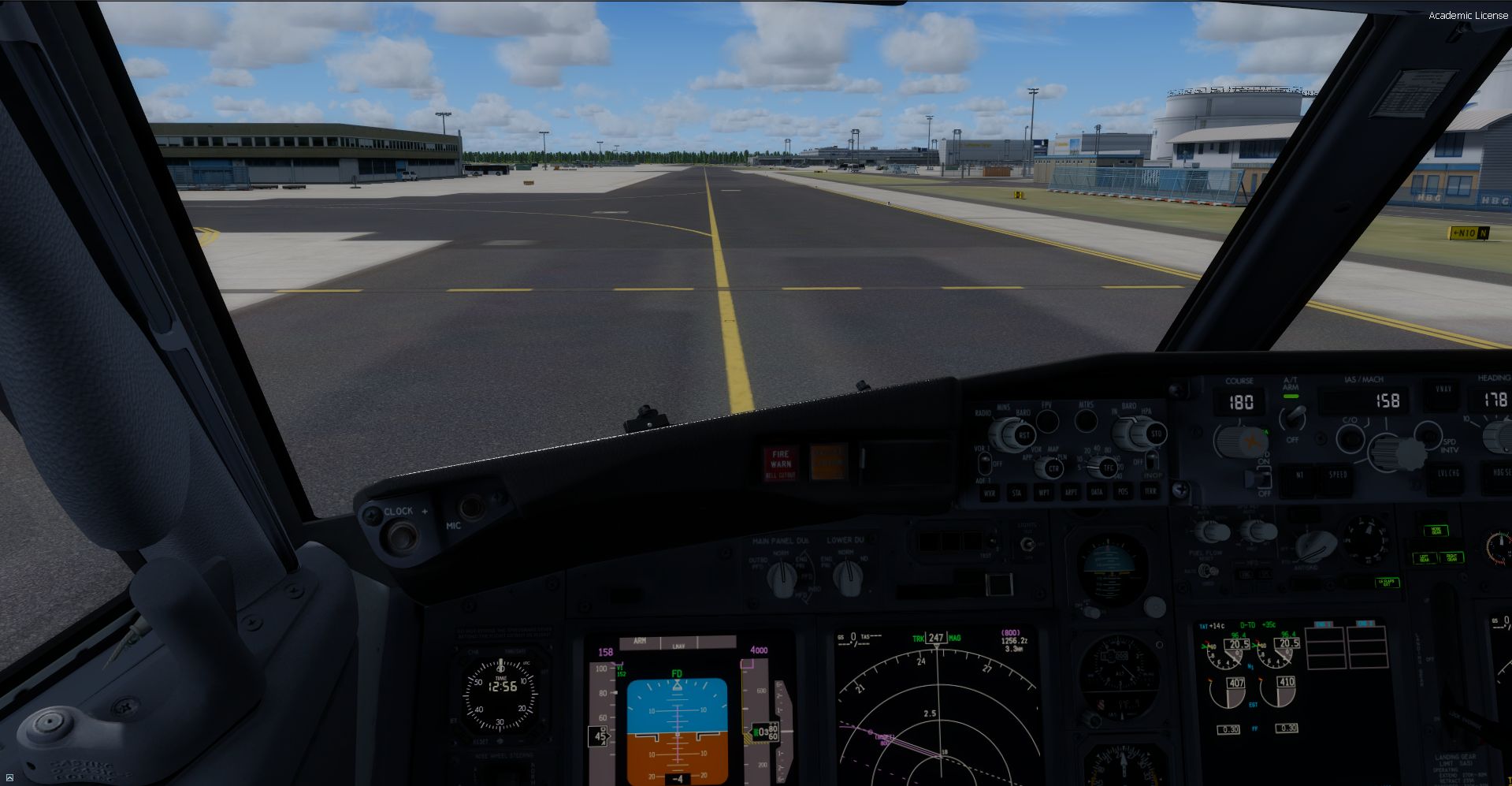
Hold short of N10 (the dashed yellow line) in front of a taxiway when advised to hold short of it! Do not enter it!
For departure out of runway 25C/07C you will be advised to hold short of a runway intersection (e.g. L3, L6 or L20). Do not turn into it, the intersection for you will be assigned by Tower on initial contact!
Give way Instruction:
Often you will hear an instruction to continue taxi as number two behind a passing aircraft (e.g. “Taxi via N8 N, hold short of N10, at November number 2 behind company A320 from the left”). This means,until you have togotten givemore waycomfortable with flying on the network. Controllers at Frankfurt/Main are usually too busy to thisprovide aircraftmuch atassistance theto crossingnew taxiway.users. There are many other, less busy and less complicated airports throughout Germany which see regular staffing as well and where controllers have more time for you.
Parking position
Please make sure you choose an appropriate stand for your aircraft type.
Do not use stands V151, V152, and V153. These stands are located in the same position as the old N8 taxiway, which many sceneries still use. Parking at one of these stands would block the taxiway for other users and you can expect controllers to follow this instruction correctly, otherwise ask theyou controllerto ifreposition yourself.
Communication
Complex instructions
As there are various complex procedures at Frankfurt/Main, you may well encounter instructions that you are unable to comply with. This doesn't even have to be a lack of skill on your part: sometimes your simulator simply doesn't have the mentionedfunctionality trafficrequired.
If you are unsure what tothe do.
wants Blue and Orange Lines:
Used for aircraft upyou to ado sizeor ofreceive A321/B739an instruction that they can taxi next to each other instead of the yellow line. These lines are located on N south of Terminal 2 and at N7 between N and L (see image).
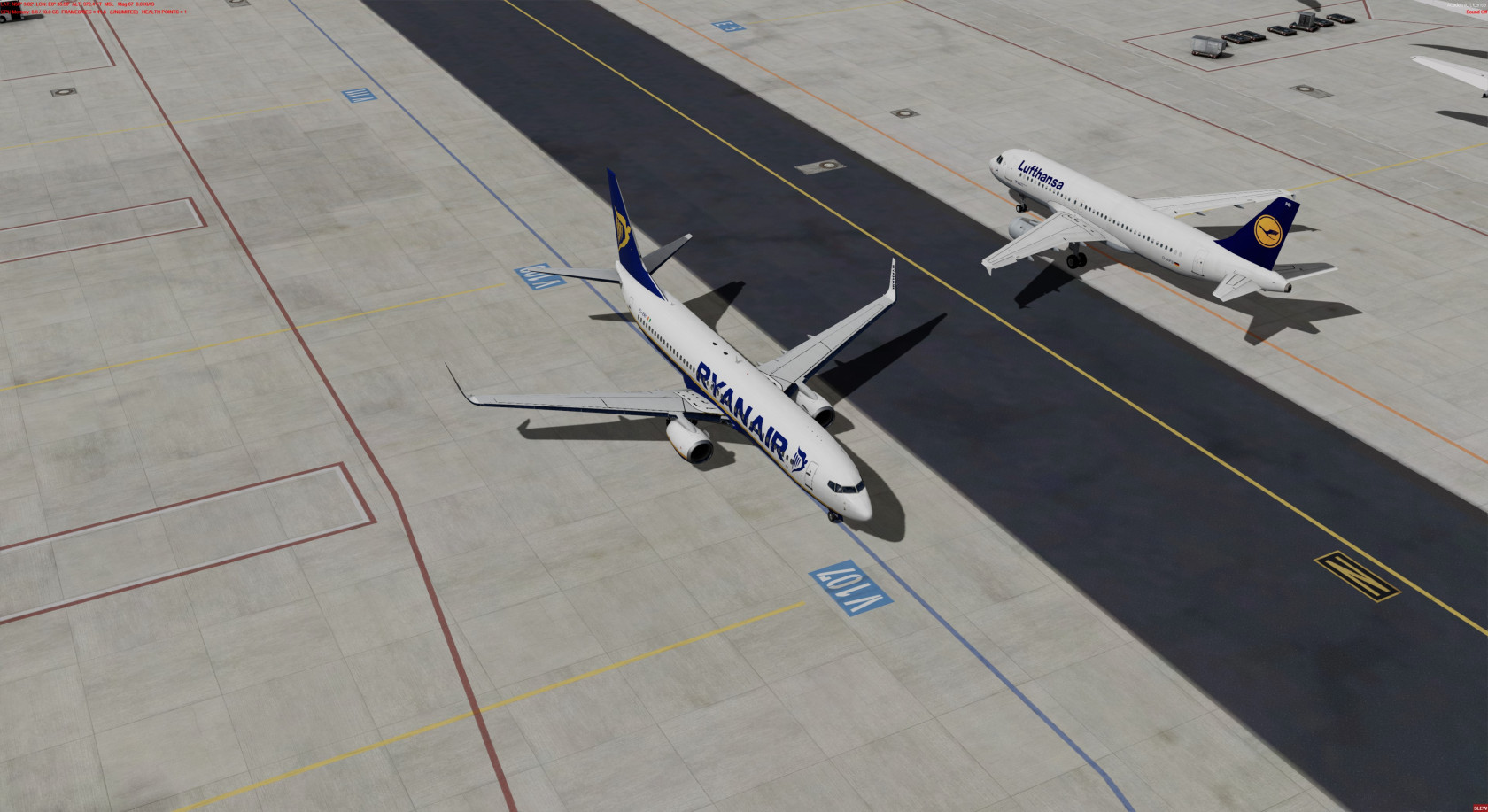
N-Blue and N-Orange used at the same time for parallel taxi
Taxiway Links at N8 and N7:
Taxiway Links are used to connect taxiway N7 and N8 at different locations (see images). If you are unable to comply with for any reason, hold position and inform ATC immediately. Not doing so will most likely result in you doing something else than ATC expects, thus causing major problems and delays; on the other hand, controllers have no problem with you asking for an explanation or a different instruction.
Handoffs
When instructed to taxicontact viaanother onecontroller, do so as soon as possible. This will avoid you having to stop moving or level off. Additionally, do not change your frequency without a handoff as all frequency changes at Frankfurt require an explicit handoff by ATC. Please do not hold your position to switch the frequency, keep moving on the ground!
Be aware that some frequencies in use might not be shown in the controller list of theyour Links,pilot client, so it is important that you followlisten it closelycarefully to avoidwhat standingATC face-to-facesays.
Special taxi procedures
As Frankfurt/Main has a big and complex apron, there are various special taxi procedures which you might not be used to. Please familiarize yourself with them.
You must also be prepared to receive various hold short and give way instructions. Additionally, you should be prepared for revisions to your taxi clearance on short notice as the situation on the apron usually evolves very dynamically.
Colored lines
Some areas of the apron have colored taxiway lines which allow for more efficient taxi operations with aircraft up to a wingspan of 36 meters.
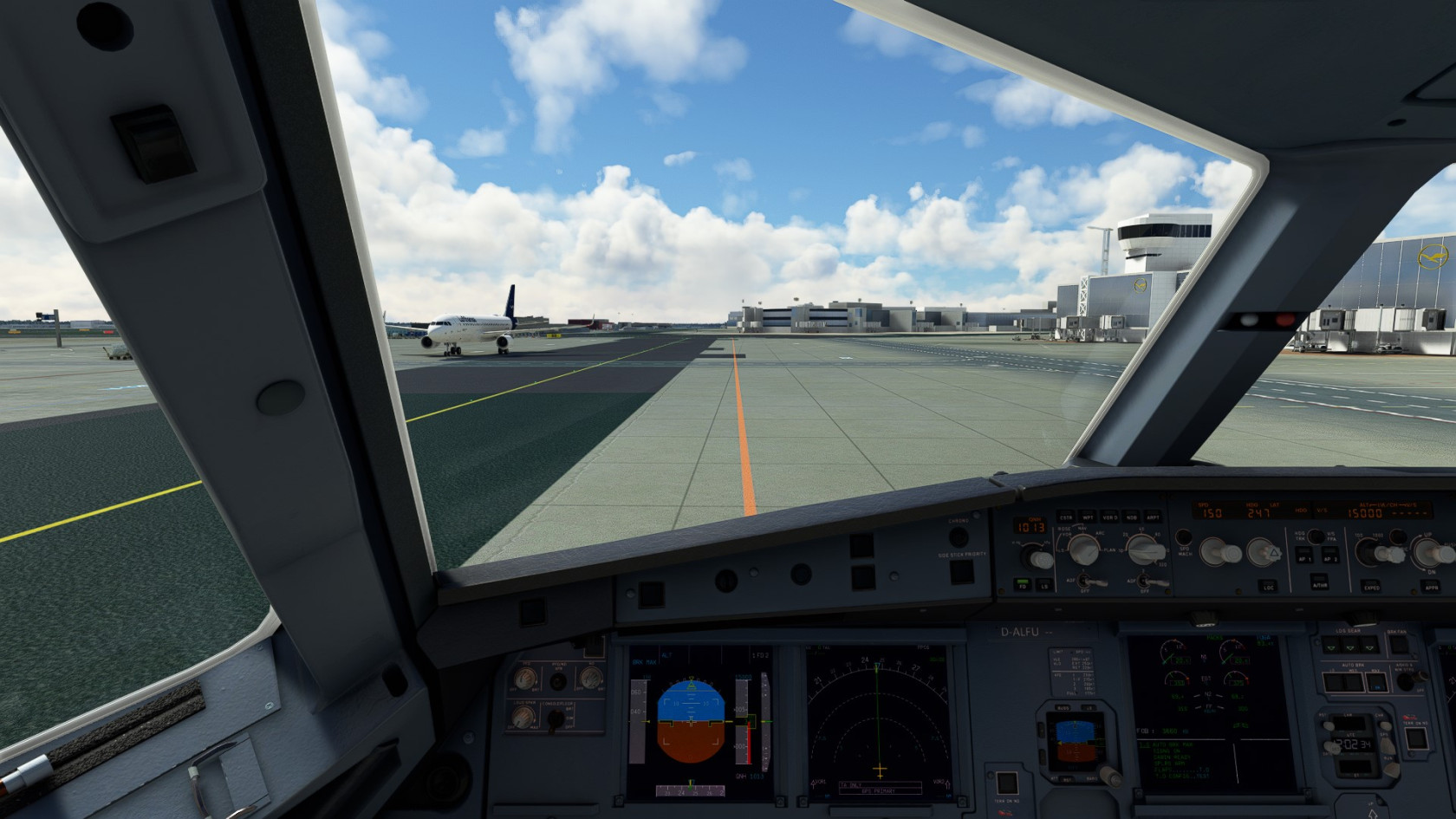
taxiing on N orange with opposite traffic on N blue
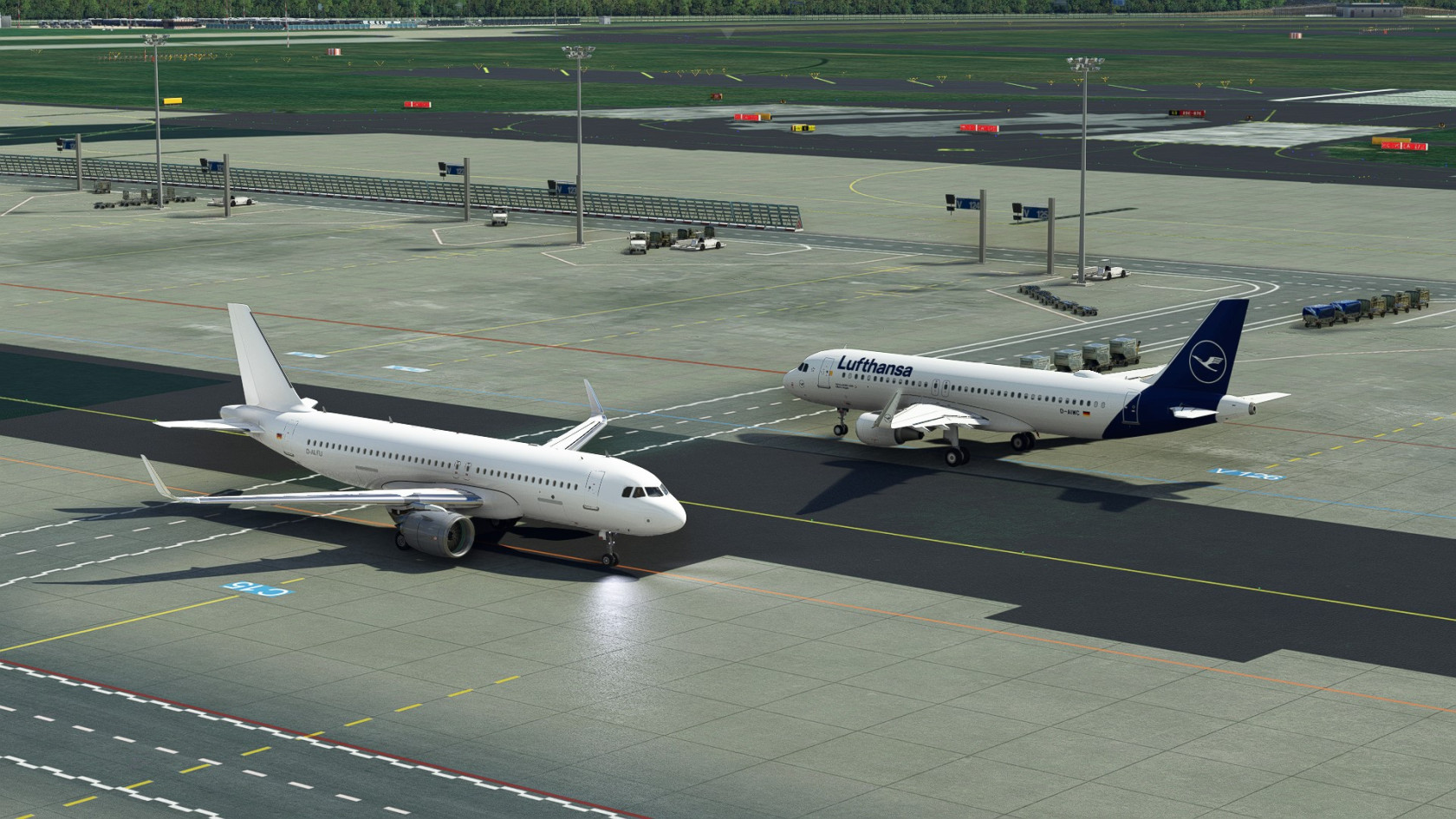
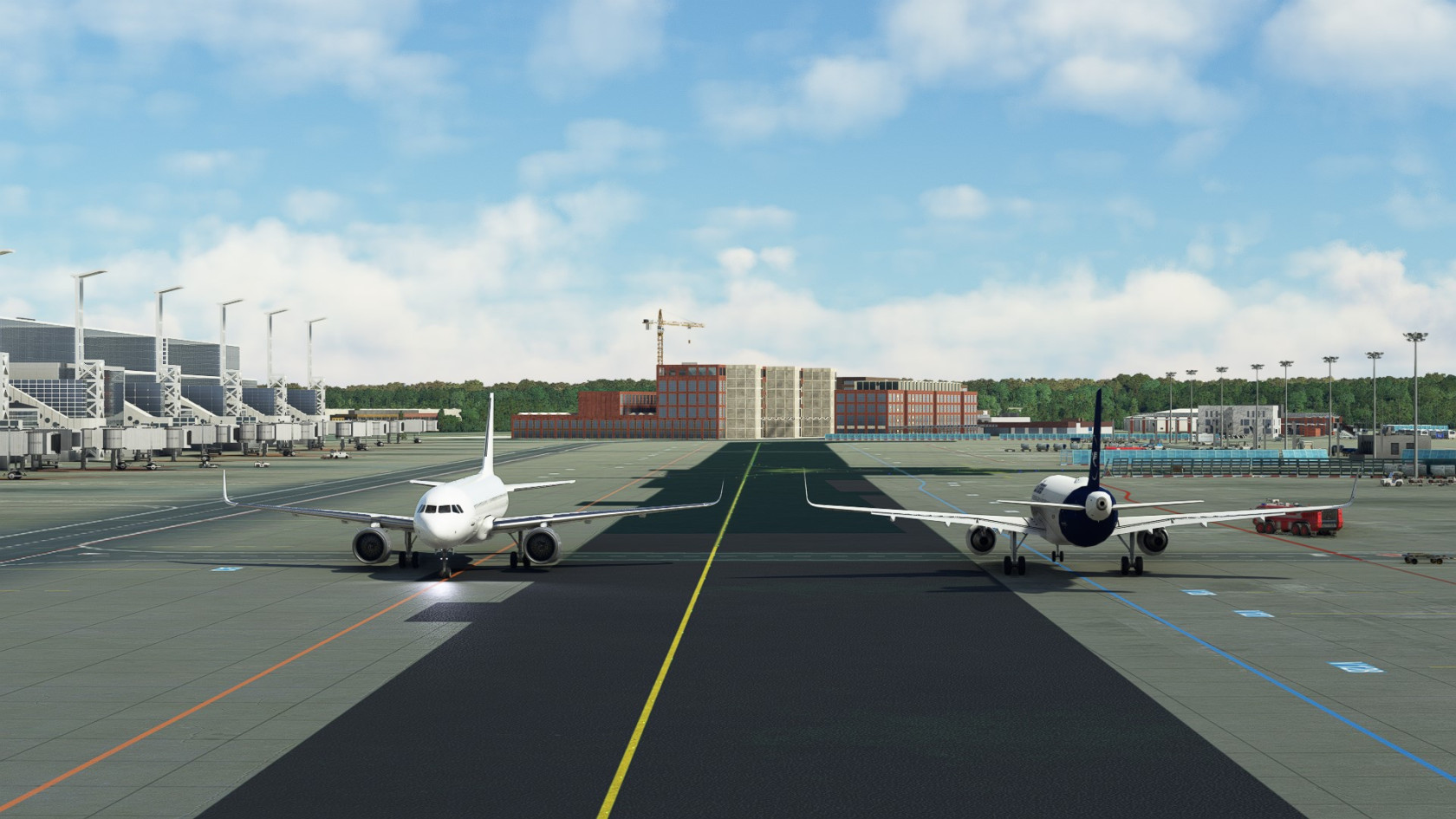
two aircraft passing each other aircrafts.on IfN orange and blue
Links
The apron at N7 and N8 utilizes so called Links to connect both taxiways at different points to allow for more efficient operations during periods of high traffic. Please refer to the images below if you are unsure whatwhich of the taxiway lines is the Link (you can click on the images to doopen youa shouldhigh alwaysresolution askversion).
Link 3
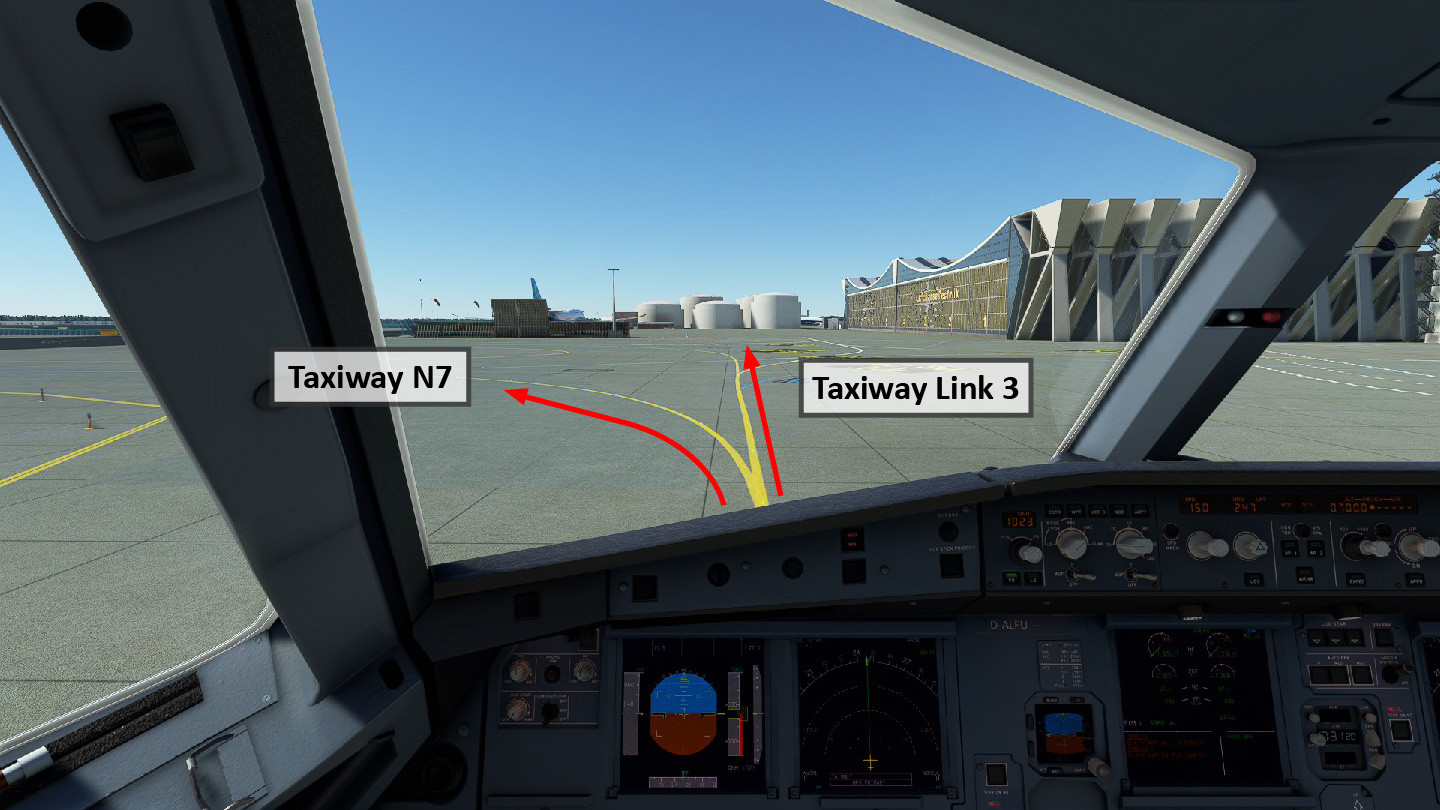
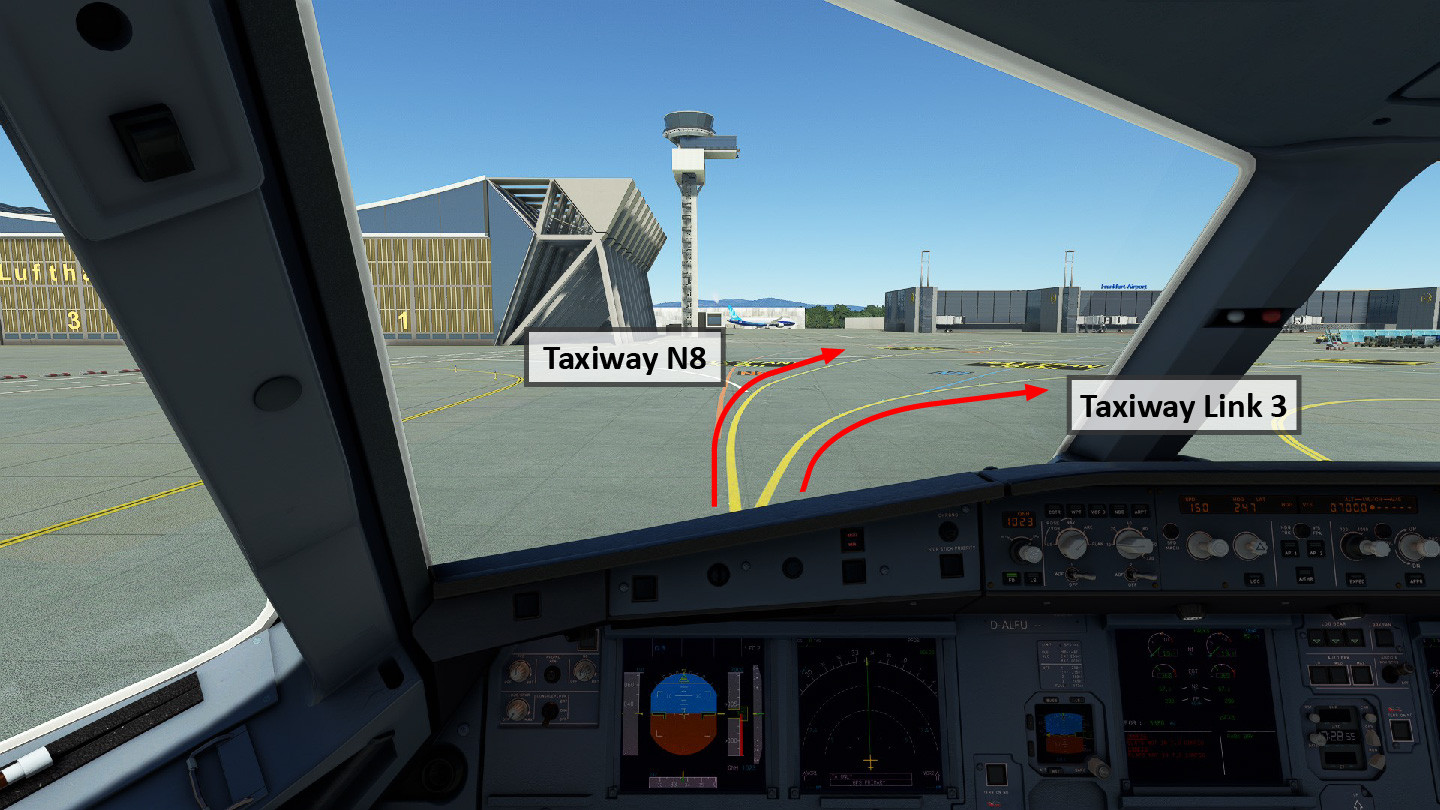
looking at Link 3 from the controllerEast to(left) avoidand athe faceSouth to(right)
Link situation4

other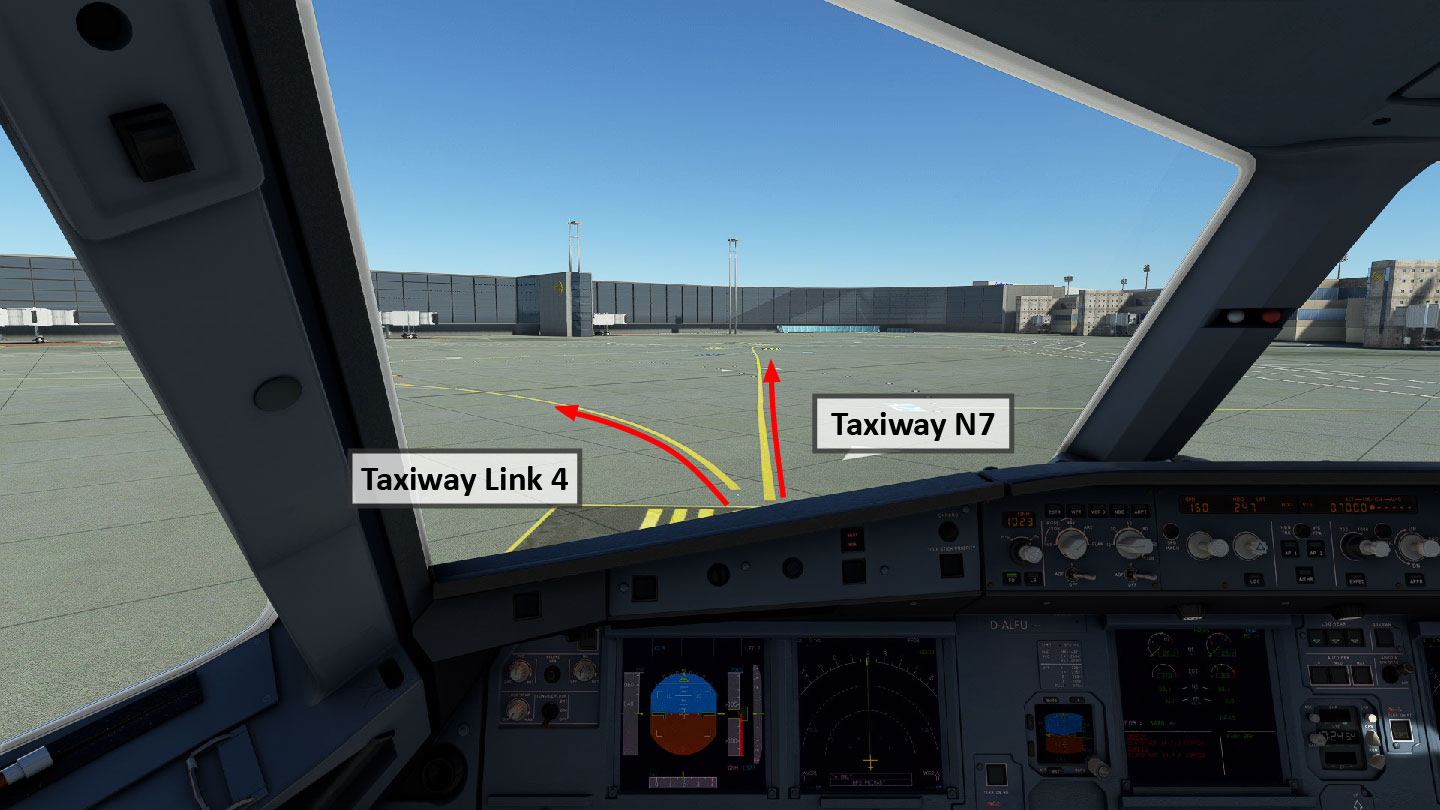
looking aircraft.at TheseLink Links4 from the West (left) and the South (right)
Link 5
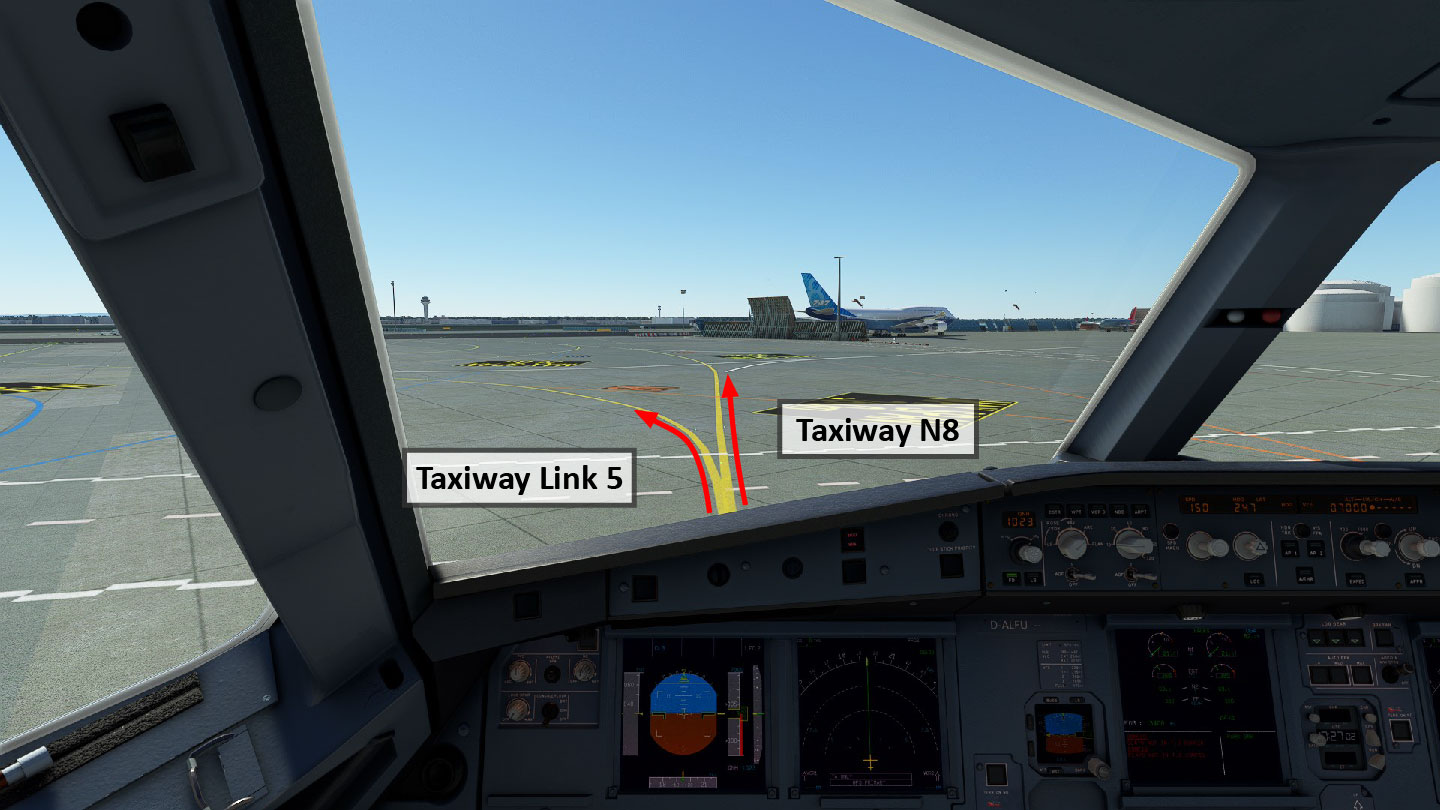

looking at Link 5 from the North (left) and the South (right)
Stopbars
There are publishedmultiple atstopbars allon charts, you may have to look at the “parking stands” chart to find them! You can find a detailed images here.
Stopbars close to the Runway:
Attaxiways U, TT, and YY, therewhich are named stopbars to protect the extended centerlinecenterlines of runways 25C/07C and 25L/07R. Do not cross these stopbars without explicit clearance as this would be considered a runway incursion. When cleared to cross a stopbar, do not stop moving until the runways (see image). The nameentirety of suchyour a stopbar can be seen at all common charts. Inbound trafficaircraft is usuallypast toldthe tofollowing holdstopbar.
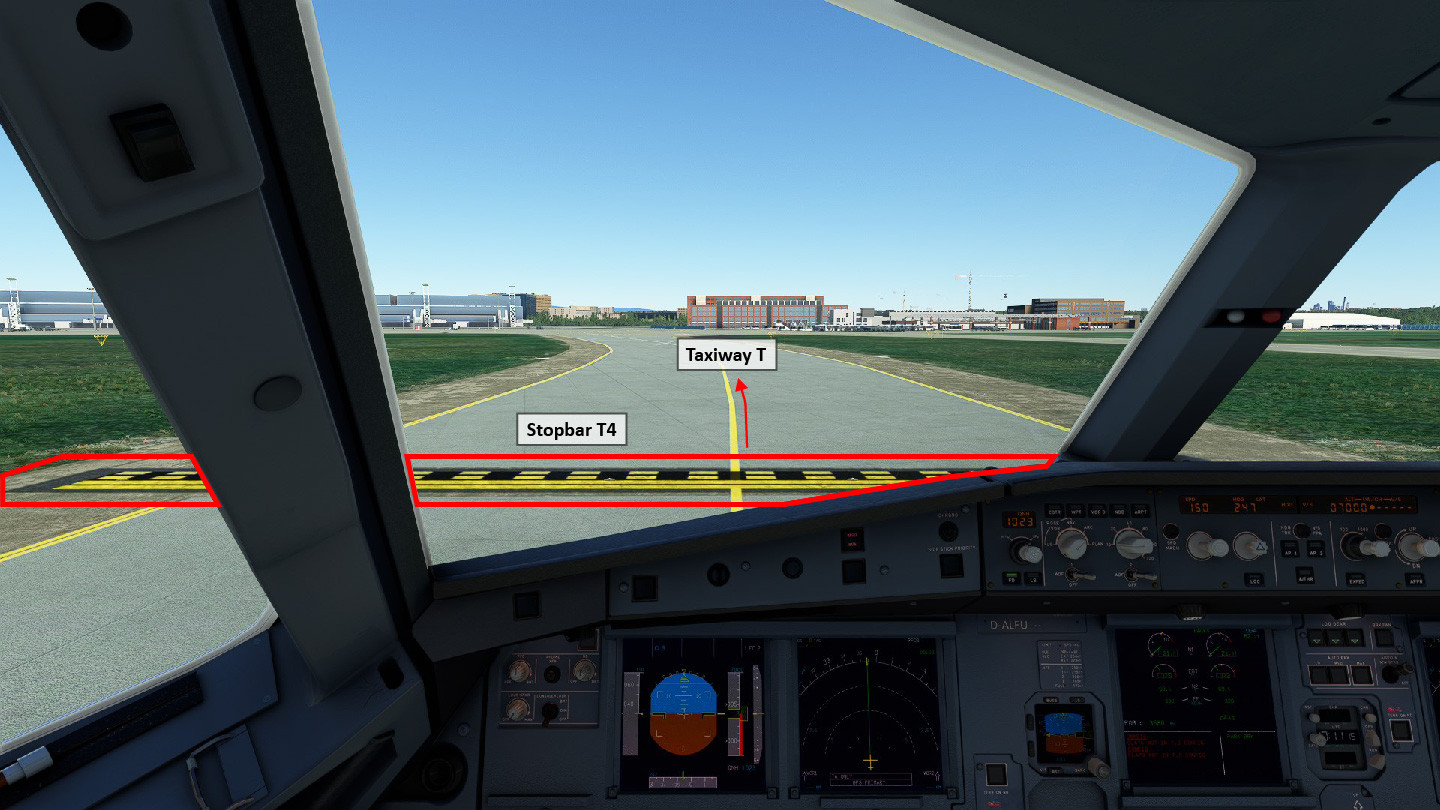
holding short of stopbar T4 on taxiway T. ATC may instruct you to hold short one of these stop bars. In that case you must not cross them without further clearance.
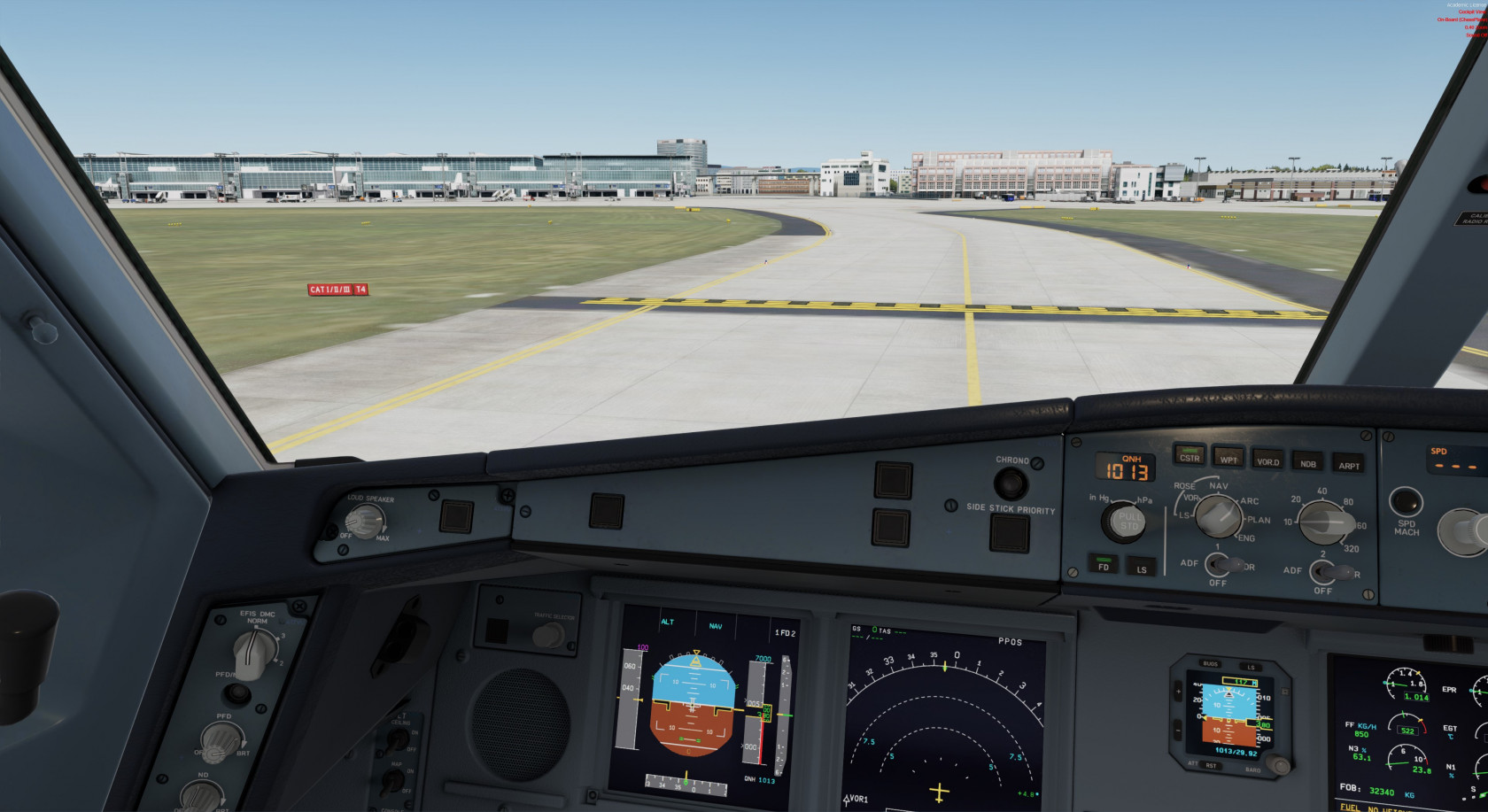
Inbound short of Stopbar T4 (yellow lines at the ground). Name of the stopbar at the red sign on the left.
